Disclaimer: Product links contain affiliate marketing links where we get a small commission when you purchase from that site. As an Amazon Associate, we earn from qualifying purchases. Also, please verify all product and pricing information directly with the linked brands. We are not responsible for errors or product discrepancies.
We finished up a two-month tour of Brazil, and boy, do I have a lot to say. For context, this wasn’t our first time in Brazil. I first visited Brazil in 2009 on a school trip. My class spent a week in São Paulo, and I also took a side trip to Iguazú Falls. Then, in 2013, Kevin and I spent a month in Brazil for yet another one of my school trips. We toured Rio de Janeiro, Vitória, Recife, and São Paulo. But despite all of our travels, especially within Latin America, we had not returned to Brazil in the past 12 years.
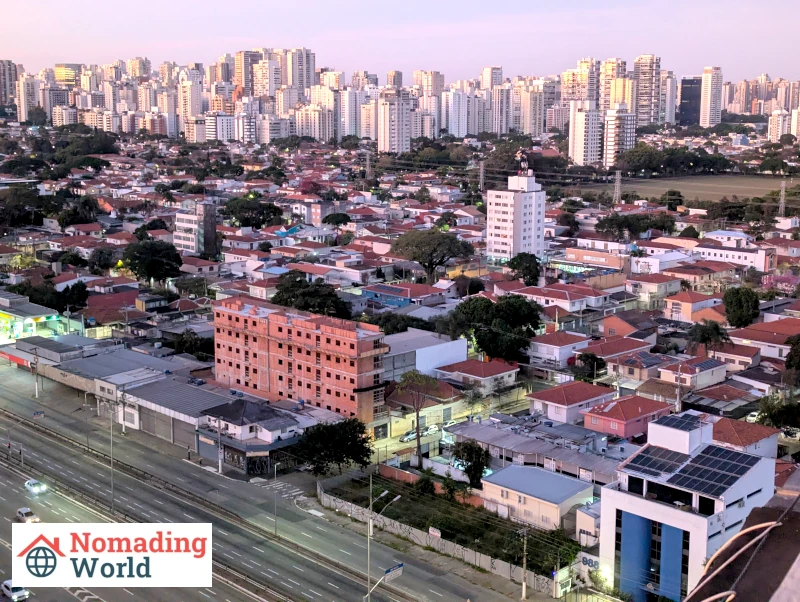
We have been wanting to return to Brazil, but for various reasons, we just haven’t. We had planned to go before April 10, 2025, so we could take advantage of visa-free access for U.S. citizens, but we missed the deadline. That set us back two months, as I had to apply for our visas (which turned out to be very easy) before visiting Brazil. We also needed to get our Yellow Fever vaccinations again because we lost our original documents in the U.S.
We settled all of that and off to Brazil we went, spending four weeks in São Paulo, two weeks in Rio de Janeiro, taking a surprise day trip to Brasília, and a week in Belo Horizonte. And what are my thoughts on Brazil? Let’s find out.
- Overall, hmm… We ended up not liking Brazil as much as we thought we would. To be clear, nothing bad has happened at all while we have been here. Nothing was stolen, there was no food poisoning, and no bad experiences. Yet nothing that exciting occurred either. It has been mostly much of the same: navigating around highly urbanized cities built in the 1970s and 1980s, and being stuck there ever since. Which has been fine – we love urban cities – but just not…exciting.
- A Time Warp to the 1970s and 1980s. The most memorable emotion I got from this past two-month trip is how bland and similar Brazil’s major cities are. The four cities we visited all have the same sea of nondescript, rectangular high-rise buildings built in the 1970s and 1980s. And all of the buildings look and feel like they were built in the 1970s and 1980s. From what I researched online, Brazil experienced a significant urbanization and construction boom during these two decades. Due to Brazil’s poorer economy, buildings were constructed to be functional rather than aesthetically pleasing, and haven’t been updated as extensively as those in richer economies. And we felt it, especially since we really love newer buildings.
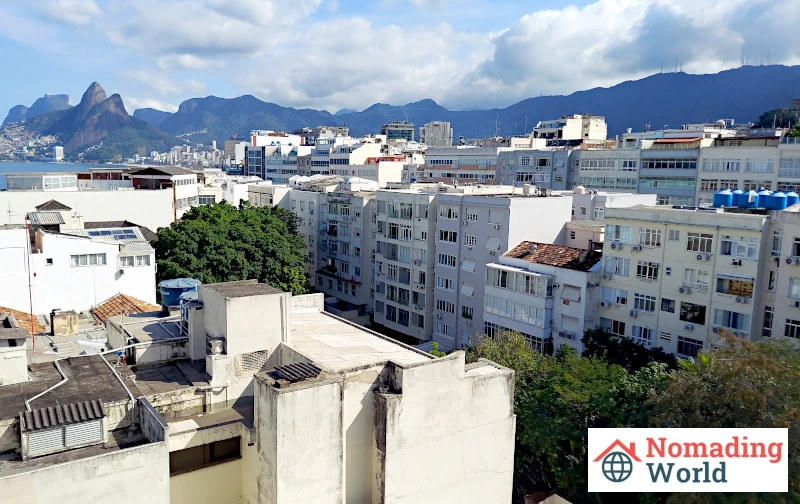
- The food has been meh and excellent at the same time. Food quality in Brazil has been at the upper end compared to other Latin American countries, except perhaps Mexico. The meats and fruits taste better (especially açaí), and the portion sizes are quite satisfying. However, the food is mostly the same, consisting of beef or feijoada (a bean stew), served with rice or potatoes. We didn’t really find an explosion of tastes like Mexico has, or even Perú. The food in Brazil is significantly more expensive than in places with similar menus, such as Paraguay or Ecuador. So, yes, we ate quite well in Brazil, but we weren’t overly excited about it. Sounds just like the way I felt about Brazil’s cities.
- Brazilians’ favorite restaurant: Outback Steakhouse. Who knew that Outback Steakhouse – an American restaurant chain with an Australian-themed menu – was so popular in Brazil? We ate at Outback several times in São Paulo, Rio de Janeiro, and Belo Horizonte. In all three places, the restaurants were packed at all times of the day. Our first time trying Outback in São Paulo, we couldn’t eat there because the wait list was too long. Mind you, this was during lunch on a weekday, not Friday or Saturday evening. Another time, we visited a mall in Rio de Janeiro that had an Outback, and, kid you not, the line to get in was out the door. But every time we visited Outback, it was for their Executive Lunch, and we always got the same meal: Chicken-on-the-Barbie, with a Jacket Potato (a stuffed baked potato) with El Ranchito salad (or, as the Brazilians would say, El Han-SHI-tu salad).
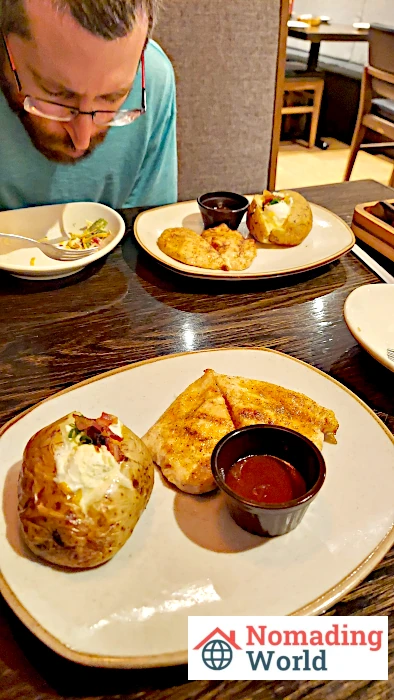
- Our favorite restaurants: GUA.CO and Taco Bell. We discovered GUA.CO in São Paulo, which is a Mexican fast food restaurant modeled after Chipotle in the U.S. However, we felt that GUA.CO was a lot better than Chipotle. We also enjoyed eating at Taco Bell. Likewise, we found Taco Bell in Brazil to be significantly better than in the U.S. As mentioned above, the food quality in Brazil is very high. But note that our favorite places all served “non-Brazilian” food: two Mexican places and an American-Australian steakhouse.
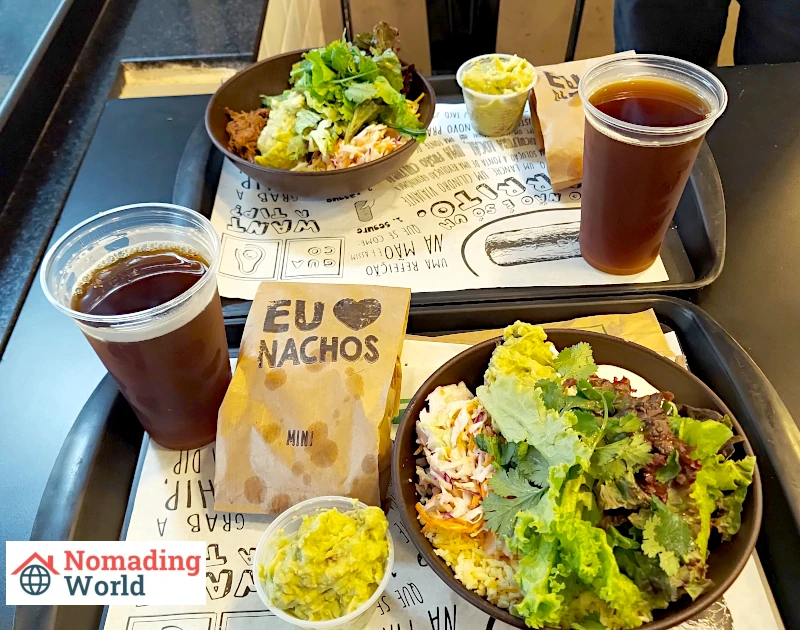
- Wrapped Napkins. One thing that confused us about restaurants is that many of them give you napkins wrapped in a paper envelope. It seems wasteful to individually wrap napkins in paper protection, especially since some places put two napkins in each paper envelope. We’re unsure whether it’s a COVID-era phenomenon that’s carried over or if there’s another reason behind it. We find it quite wasteful and borderline annoying when you need a napkin but struggling to open the package.
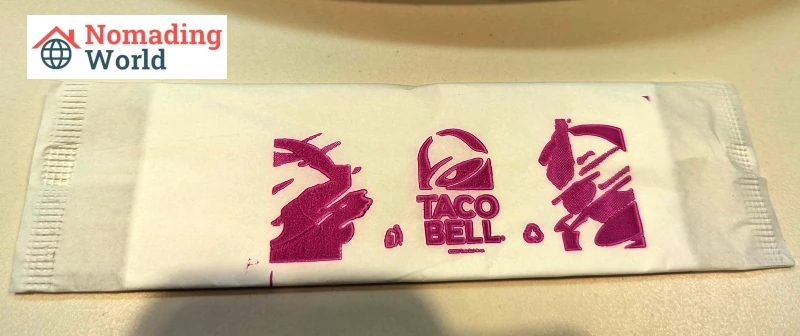
- Uber is widespread and cheap. It was amazing using Uber to get around Brazil’s largest cities. Uber is hit or miss throughout Latin America, as some countries “shadow ban” Uber while other countries don’t care. Fortunately, Uber is freely allowed to operate in Brazil, so it is very easy to use. And the costs are quite cheap! It cost at most US$20-30 to travel to/from the airports in the cities we visited (US$10 in Brasília). And for just getting around the city, almost all trips were US$10 or less. We never really had to wait that long, with many trips starting in a couple of minutes. Really, if you can afford Uber, there is no reason to take public transportation in Brazil.
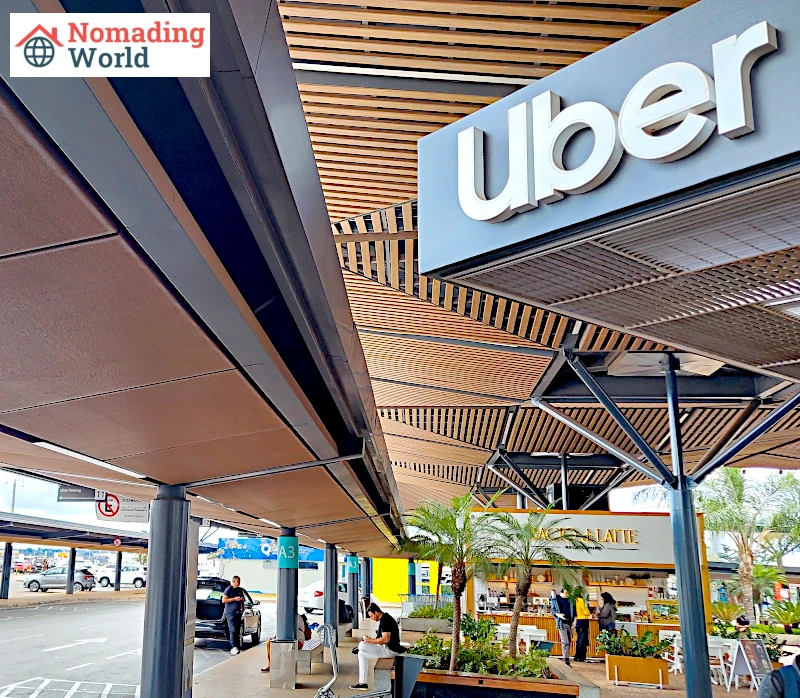
- The All-Inclusive Beach Day. We aren’t beach people. So while many people love the idea of going on vacation and spending all day by the beach – think Cancún – we aren’t impressed. Nonetheless, my best friend from college came to visit us in Brazil, and he loves going to the beach. Therefore, I spent several days with him chilling at the world-famous Ipanema Beach in Rio de Janeiro. One thing that really stuck out to me is how easy it is to spend a day at the beach. One reason why we don’t like the beach is the lack of services. It’s a real struggle to lug your umbrella, beach chairs, drinks, and snacks to the beach. And especially if you don’t have a car, or are on vacation, how are you possibly going to do that? But Ipanema Beach has that all covered. Walk up to any of the stands on the beach and you can order anything you want: a chair, an umbrella, drinks, snacks, etc… Just show up with a towel, sunscreen, and sunglasses and the rest comes to you. We generally spent around US$10 each day to rent two chairs and an umbrella, which I thought was an amazing deal. It just made the experience so richer without having to worry about any of this. (I am sure those prices are far higher during the summer. Supply and demand!)
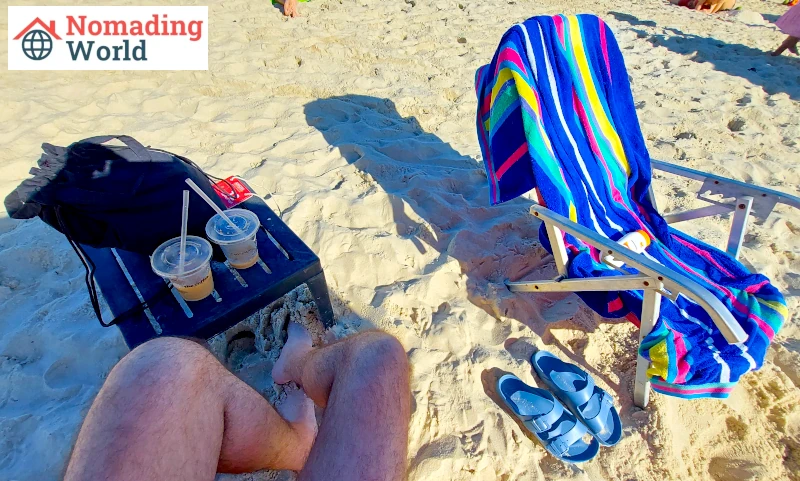
- But Ipanema Beach is crowded. Now, here’s the caveat: we visited Ipanema Beach in the middle of the Brazilian winter (the first week of July, which is equivalent to visiting Santa Monica in the first week of January). So, yes, it was easy to get what we needed because, compared to the summer, there were far fewer people around. I am also sure the prices were dramatically cheaper for the same reason. And despite the time of the year, Ipanema Beach was still quite busy! I can’t even imagine what it would be like during the summer tourist season.
- Brazilian Portuguese is beautiful. Remember that Brazil is the only country in Latin America that does not speak Spanish. Brazilians speak Brazilian Portuguese. I believe Brazilian Portuguese might be the most beautiful-sounding language in the world. At least, Brazilian Portuguese sounds a lot better than European Portuguese, which has a more halting way of speaking compared to the sing-songy rhythm of Brazilian Portuguese. I find Brazilian Portuguese fun to speak, even though my accent is terrible at best. But almost all Brazilians were very kind to me and tried to be helpful when speaking with me, which I really appreciated. Some spoke slowly, which was perfect. And this does bring me to a pet peeve when speaking multiple languages: speaking louder to someone doesn’t help the situation at all. But speaking slower dramatically improves comprehension. Speak slowly, not loudly!
- Smart Fit originated in Brazil. We had a funny experience in an elevator in Belo Horizonte. Kevin and I are big fans of Smart Fit (you can read my Smart Fit Guide here), the Brazilian chain of gyms that is found throughout Latin America. We received two free Smart Fit shirts when we signed up back in early 2024, and I commonly wear both of the shirts (Kevin gave his to me). Since there is a Smart Fit on every corner in Brazil, it wouldn’t seem out of place for me to wear one on the streets of Brazil. Except we signed up for Smart Fit in Ecuador, meaning my shirt is written in Spanish, not Portuguese. So, think about this: if you are Brazilian and only know Smart Fit in Brazil, wouldn’t it be weird to see someone wearing a Smart Fit shirt that looks identical to the ones in Brazil, except it is all written in Spanish? And that is exactly what happened to us in Belo Horizonte when the woman we were riding the elevator with asked me why my shirt was written in Spanish. I told her it was because we got it in Ecuador. It was all good, but it occurred to me how weird it must have been for her to see that. This would be the equivalent of wearing an Outback Steakhouse shirt in the U.S., except all of the text was in Portuguese!
- English vs Spanish as Brazil’s Second Language: I’m unsure what to make of this, but I expected to find Spanish as Brazil’s second language, much like it is in many parts of the United States. Perhaps it’s because Spanish is so entrenched in the rest of Latin America, or maybe it’s because Brazil is surrounded by mostly Spanish-speaking countries. But this is not actually the case. English is really the second (official) language. For example, in order to sit in an exit row on a LATAM flight, you must speak either Portuguese or English; Spanish doesn’t count. Menus are in Portuguese, or sometimes, in English. But they aren’t in Portuguese or Spanish. If they are in Spanish, then they are usually also in English. In a way, this makes sense. If a country is going to institute a second language, it might as well make it a global second language, which is essentially English. And Brazil wants to be a global power. But Spanish is no lightweight language, and again, Spanish dominates the rest of Latin America. Yet Spanish and Portuguese are also quite similar, and on some level, mutually intelligible. So perhaps the thought is that English is the global second language, so we should dedicate “second-language” resources to English. If a Spanish speaker and a Portuguese speaker need to communicate, they could probably understand each other enough to get by. I don’t really know, and perhaps it is just my naive bias, but I found this interesting.
- Winter Time Zone Blues: We visited Brazil in the dead of their winter: June and July. As such, the sun set around 5pm. This used to happen back in Los Angeles during the winter, but I haven’t experienced it for a while. And as someone with seasonal depression, I remember not liking the winters in Los Angeles because there wasn’t much sunlight, especially after school. I loved the summers when the sun would stay out until 8pm or later. Experiencing this again in Brazil during the winter cast a shadow over our trip. Again, something to think about in contrast to the “summer beach” vibes that most people associate with Brazil.
- Seeing Brasilia in real life was cool: We took a spontaneous day trip to Brazil’s capital, Brasilia, after our flight from Rio de Janeiro to Belo Horizonte was delayed and we missed our connection in Brasilia. Turns out the next flight wasn’t for another 11 hours. Instead of staying at the airport, we left – it was a domestic flight after all – and explored a bit of Brasilia. As someone who studied urban planning at university, I read so much about the “planned city” aspect of Brasilia that it was surreal to be standing there in real life. We experienced the planned city, visiting the superquadras, the alas, and the downtown area. It was definitely cool to see the architecture and the level of detail in the city’s planning. And the city indeed felt planned rather than the quaint, intimate feel of historical city centers, or the lack of detail of modern business districts that exist solely for skyscrapers. I am also glad our flight was delayed, as it added a spontaneous trip to our itinerary that turned out to be a treat.
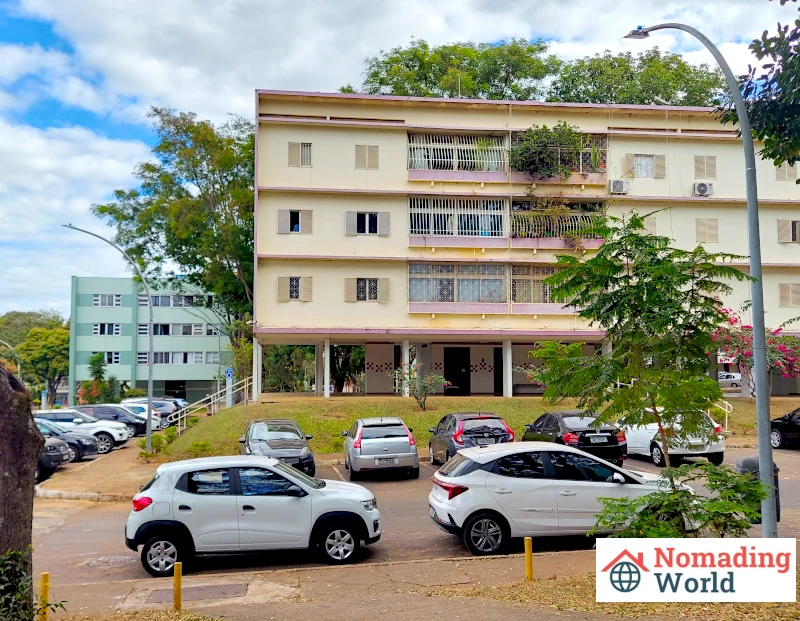
- But Brasilia is not Walkable: Interestingly, Brasilia was not the urban planning paradise that I grew up believing. I believe that is because Brasilia was planned in the 1950s and 1960s. Thus, it is entirely reflective of urban planning at that time: cities designed for the fast movement of cars. The superquadras incorporate an element of walking to shops and restaurants, with each superquadra having its own little “Main Street.” But you can’t really walk between superquadras that easily. So, if your superquadra doesn’t have what you need—and, really, we are only talking about a handful of businesses in each superquadra—then how are you going to get to where you need to go other than by car? Even the streets running through the alas are quite large. So even though we stayed within the South Wing, we had to take Uber to explore the wing because it was just too far to walk. If Brasilia were born today, I can guarantee it would look completely different. And perhaps that is also what felt surreal about it: not that it was this ultra-modern capital city, but instead, it was a relic of the past that looked more tired than futuristic.
- We Toured Christ the Redeemer: While in Rio de Janeiro, we visited the most touristy of tourist attractions, the statue of Christ the Redeemer. If you don’t know what I am referring to, take a look at the photo below; you’ll probably recognize it as one of Brazil’s most iconic landmarks. It was cool because we got to see iconic bird’s-eye views of Rio de Janeiro. Especially after spending a few days in Rio, seeing the city from above put the neighborhoods into perspective. Yet, aside from the views, I found it not that exciting. First, it didn’t have any religious meaning for me, which would be different for many others who are religious. Second, it was very crowded and we went during a weekday in the middle of the off-season. I can’t even imagine what it is like during the high season! Third, you really can’t see the statue that well, even though you are right next to it. That is because the statue is so tall and so massive that when standing right next to it, you really have to look vertically to see Christ’s face. For me, it also didn’t allow me to really take in the statue because of the awkward angle, and also because it was just so crowded.
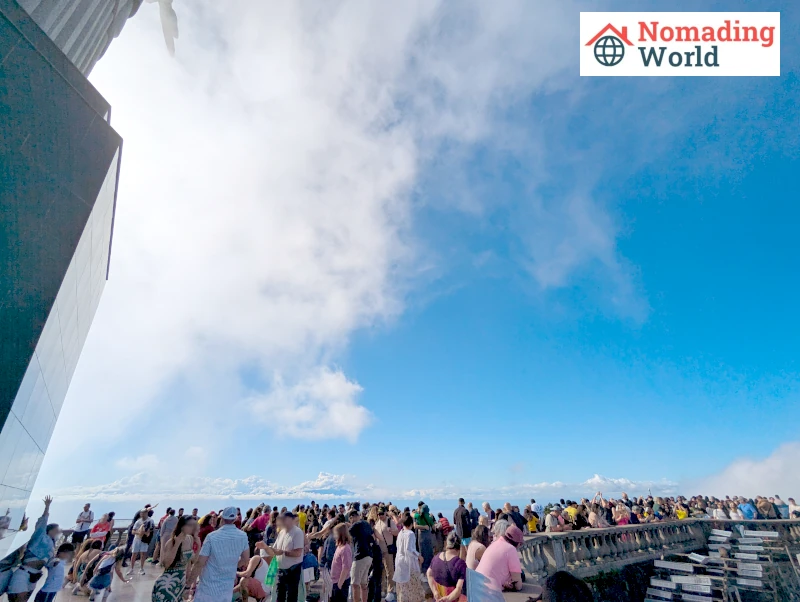
- My Quick Summary of Neighborhoods: What are my two-sentence summaries of the neighborhoods we stayed in?
- Jardins, São Paulo: Hilly and dense, but with mid-rise buildings and an alternative, somewhat hippie vibe. Somewhat similar to San Francisco, but with oppressive weather in the summer.
- Paulista, São Paulo: What I imagine living in Manhattan is like. Famous, busy, businessy, dense, go, go, go.
- Vila Olimpia, São Paulo: I expected Vila Olimpia to be more upscale and elegant than it actually was. After a week in Vila Olimpia, Kevin and I much preferred Paulista.
- Ipanema, Rio de Janeiro: Very touristy, very beachy, very dense. If you’re looking for a “Brazilian beach vacation” with amenities at your doorstep, Ipanema is the perfect destination. (If you are poorer, you go to Copacabana; if you are richer, go to Leblon.)
- Barra da Tijuca, Rio de Janeiro: Quintessential “American” suburb, Brazilian-style. It is like Encarnación, Paraguay, except with high-rise condo buildings for people who want the city, but really don’t want the “city” per se.
- Savassi, Belo Horizonte: I don’t think we gave Savassi enough credit as a cool neighborhood that has great amenities with a trendy vibe and isn’t located in São Paulo or Rio de Janeiro. If we had spent just a few more days in Savassi, we probably would have liked it better than we did, because it takes time to find new restaurants, set your routine, and understand the neighborhood on a more-than-superficial level.
- Guarulhos Airport is South America’s International Gateway: São Paulo has three airports – Guarulhos (GRU), Congonhas (CGH), and Viracopos (VCP) – but they are not the same. Congonhas is the airport in the city and only has domestic flights. We left São Paulo from Congonhas, and we thought it was cramped and old. But the location is unbeatable, less than 15 minutes by car from our Airbnb in Vila Olimpia. Viracopos is actually located in a suburb called Campinas, not in São Paulo, and really only serves one airline, Azul. (Azul is Brazil’s literal equivalent of JetBlue in the U.S. since they were started by the same founder, and “azul” means blue in Portuguese.) So for almost all international passengers, that leaves Guarulhos as the airport you’ll fly into and out of. I didn’t grasp how much of an international gateway it is for all of South America until I flew into Guarulhos earlier this year on a connecting flight from the U.S. Seeing the amount of intercontinental flights, and the unique airlines that fly into Guarulhos but not to other South American airports, made me appreciate the heft that São Paulo carries in South America. Guarulhos has South America’s only flights to Africa – to five different cities! – and serves more than twice the number of European cities compared to Rio de Janeiro or Buenos Aires, the closest competitors. Guarulhos also serves 13 U.S. airports, one more than Bogotá, and several more than its closest competitors, Rio or Buenos Aires.
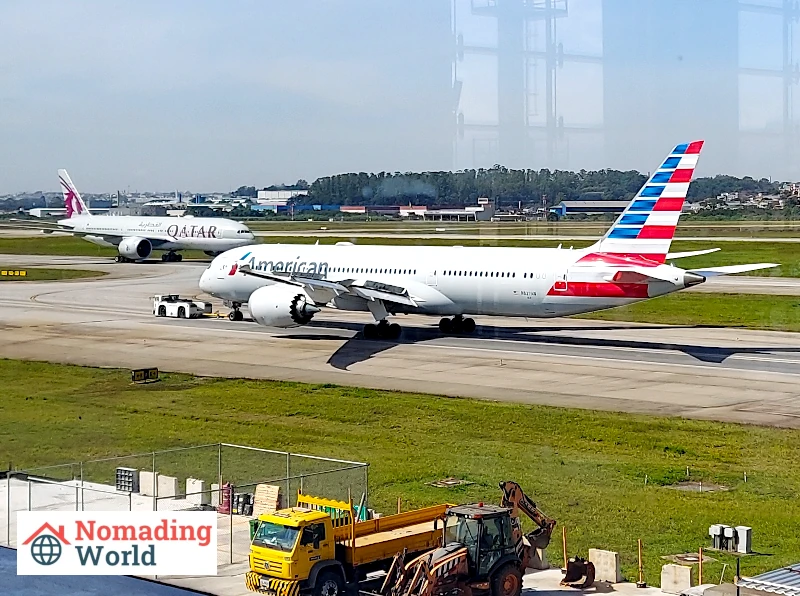
- What about Rio’s Airports? Rio de Janeiro also has two airports – Santos Dumont and Galeão – both of which are smaller than their counterparts in São Paulo. Galeão is Rio’s international airport, which doesn’t serve anywhere near the destinations that Guarulhos serves. Santos Dumont is Rio’s domestic airport. First off, the terminal is quite interesting as it is a cylindrical tube with lots of glass. It also gets extremely hot and sunny in the mornings. Second, Santos Dumont almost entirely exists to serve only one destination: São Paulo. Unlike Congonhas, which serves almost 40 domestic destinations in Brazil, Santos Dumont serves three: São Paulo, Brasilia, and Belo Horizonte. And the number of flights to São Paulo completely overshadows the number of flights to Brasilia and Belo Horizonte.
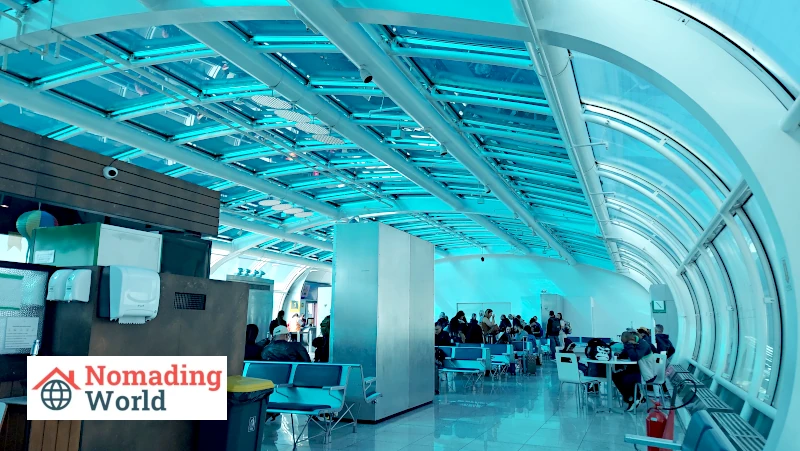
- Very High Quality of Life! The truth is that you can live in many parts of Brazil and have a quality of life equal to or greater than the U.S. You can live in an area that has a heavy influx of American-style amenities – such as the plethora of malls and imported restaurants in Barra da Tijuca – or go the other way and live by the beach in a very Brazilian lifestyle (Ipanema). Yes, there are parts of Brazil that have a poor quality of life, but so does every country, including the U.S. But after spending two months in Brazil, I never felt that I was living in a “sub-par” area of the world. Although Brazil isn’t for us at the moment, it was still a wonderful experience.

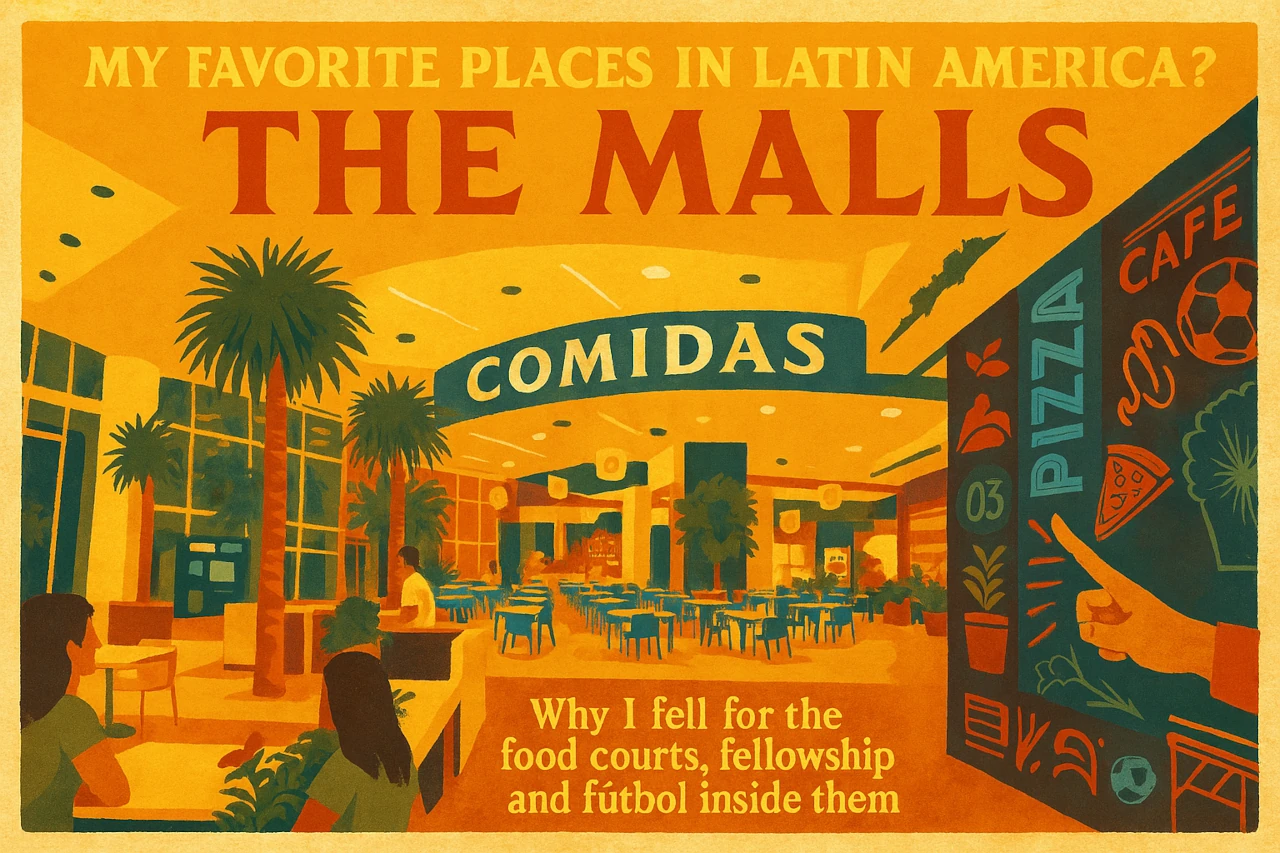
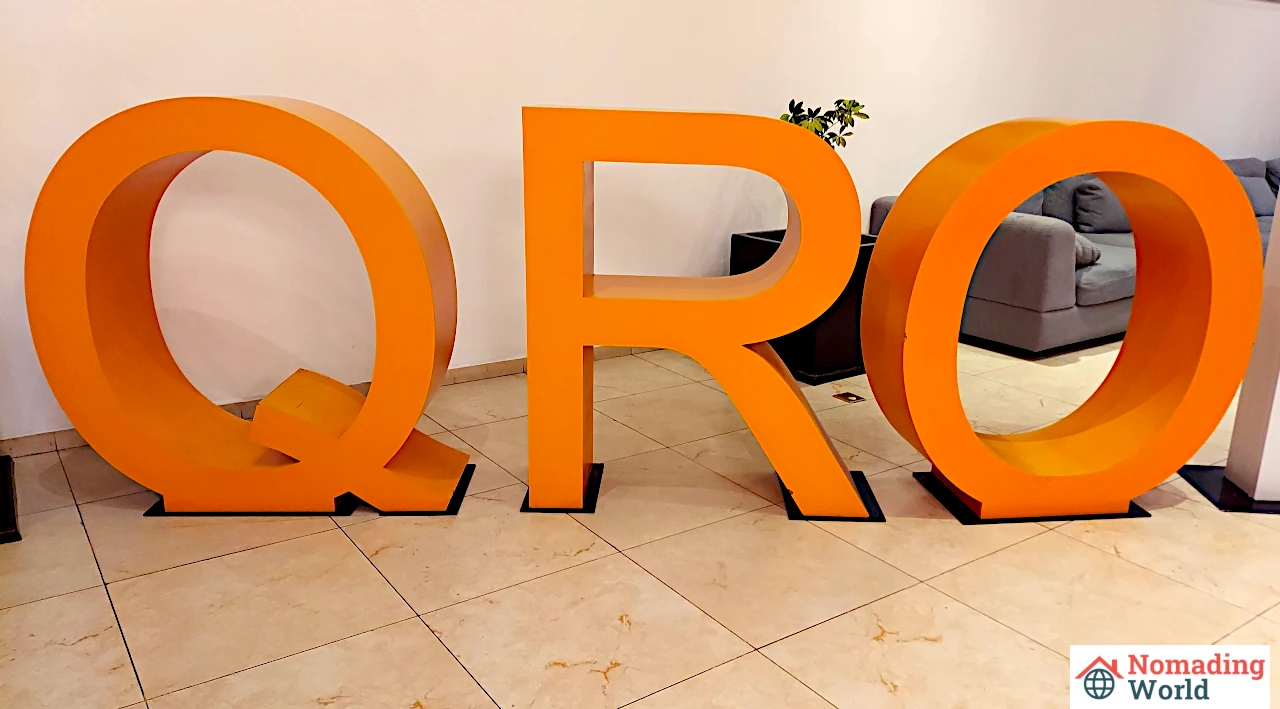



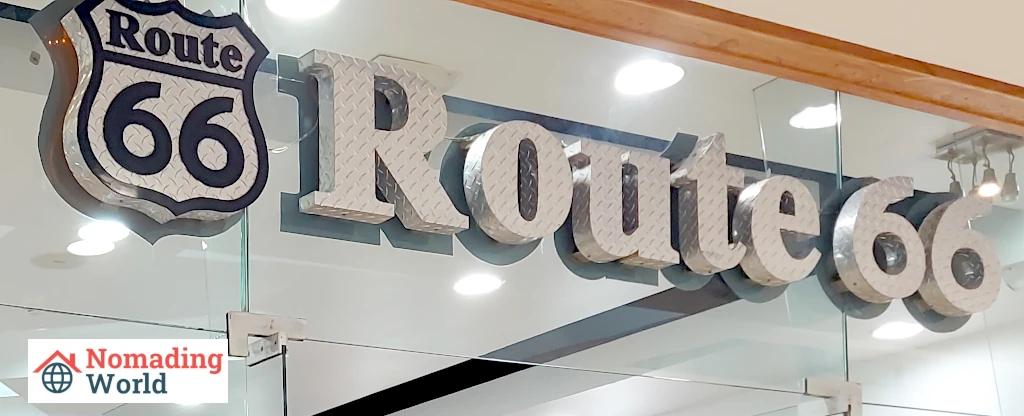
This was very, very interesting to read, with all the details, information, your personal thoughts & ideas. I learned a lot! Thank you for the comparisons in places at a certain time of year (i.e. Ipanema Beach, “……the first week of July, which is equivalent to visiting Santa Monica in the first week of January”). That gave me a very clear understanding of how it felt. I could actually feel that “first week of January in Santa Monica”. I didn’t know that July was their winter, and that was really a shock to me (you can tell, I’m not a traveler……that is why all of this information is very fascinating to me). The subject of Brazilian Portuguese and English, but not Spanish. That was surprising. I thought it would’ve been Spanish as the 2nd language. I’m going to look up, “Brazilian Portuguese” on Youtube. I’d love to hear it, now that you’re describing it. “Outback Steakhouse” really threw me off!!! That was a shocker, too!!! So was “Taco Bell”. I would never, ever have guessed that. When you’re talking about the Christ statue and the enormous size of it, it makes me think that you’d have to be standing wayyyyyy across the area there in order to take it in and see it in all it’s glory. No way would I be able to be standing next to it, and looking straight up…….forget it (I’d be going to the next neighborhood and using binoculars). I didn’t know that Uber is widespread and cheap, and that surprised me. I was thinking it cost enough, but I also thought everywhere was very “walkable” so Uber wasn’t needed. I’m really learning a lot from this blog! It’s great that you can get the chairs and the umbrella at the beach, because walking there and lugging all that stuff (in addition to towels, food, a radio, personal things, etc., which would describe me, myself), it’s just too much. The airport information is very useful, and out of all those cities you spoke of, I would choose “Paulista”. The area, “Jardins” sounded good because I love San Francisco (the main city area), but I’m also not good in “hilly” areas, so I’m back to Paulista. Thank you for this blog. I really enjoyed reading it, and I appreciate that you say it how it is with everything.